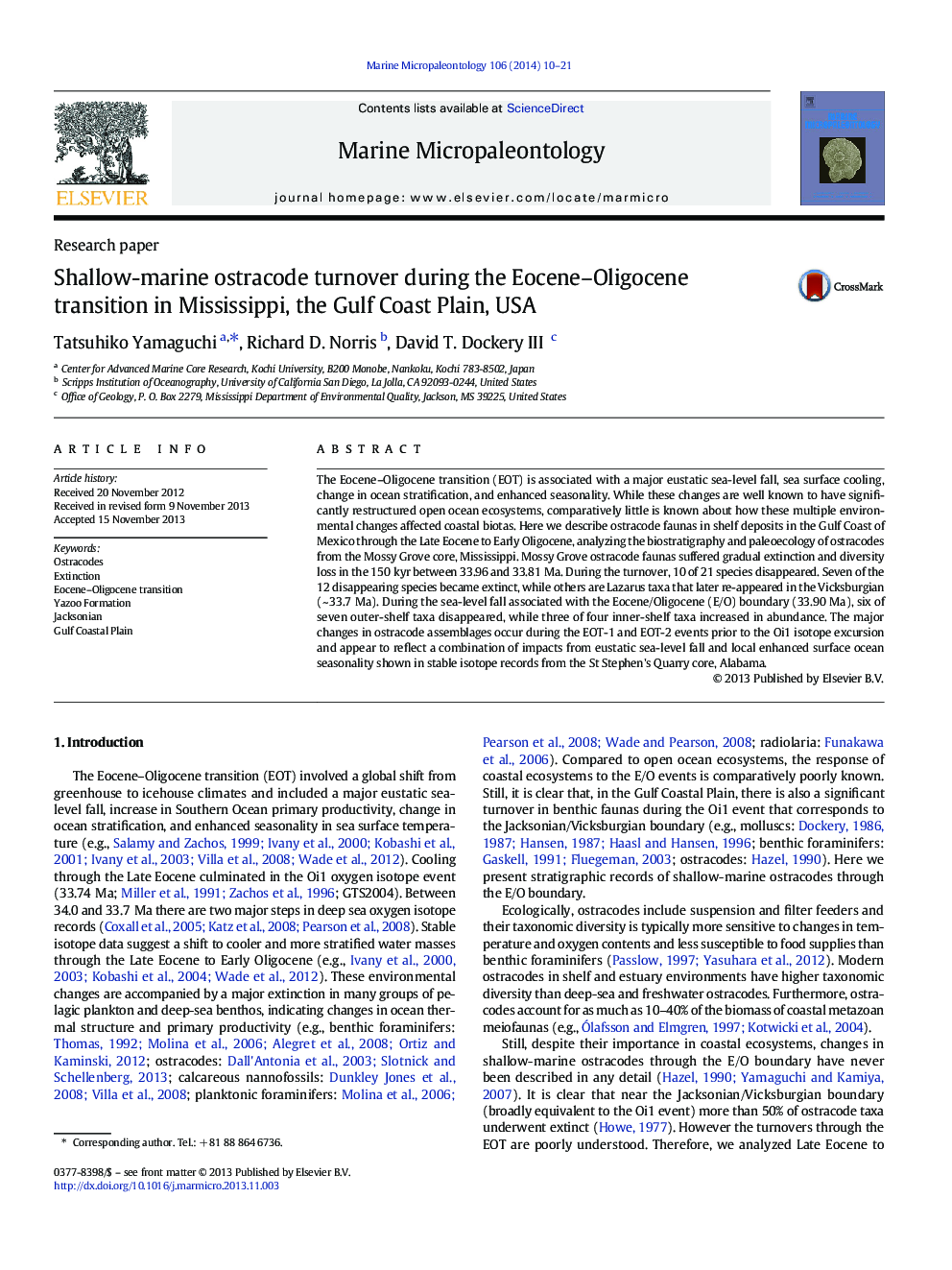| کد مقاله | کد نشریه | سال انتشار | مقاله انگلیسی | نسخه تمام متن |
|---|---|---|---|---|
| 6448565 | 1642179 | 2014 | 12 صفحه PDF | دانلود رایگان |
عنوان انگلیسی مقاله ISI
Shallow-marine ostracode turnover during the Eocene-Oligocene transition in Mississippi, the Gulf Coast Plain, USA
ترجمه فارسی عنوان
جریان ایستاکودی دریاچه ساحلی در طول انتقال ائوسن-اولیگوسن در میسیاسپی، دشت ساحل خلیج فارس، ایالات متحده
دانلود مقاله + سفارش ترجمه
دانلود مقاله ISI انگلیسی
رایگان برای ایرانیان
کلمات کلیدی
موضوعات مرتبط
مهندسی و علوم پایه
علوم زمین و سیارات
فسیل شناسی
چکیده انگلیسی
The Eocene-Oligocene transition (EOT) is associated with a major eustatic sea-level fall, sea surface cooling, change in ocean stratification, and enhanced seasonality. While these changes are well known to have significantly restructured open ocean ecosystems, comparatively little is known about how these multiple environmental changes affected coastal biotas. Here we describe ostracode faunas in shelf deposits in the Gulf Coast of Mexico through the Late Eocene to Early Oligocene, analyzing the biostratigraphy and paleoecology of ostracodes from the Mossy Grove core, Mississippi. Mossy Grove ostracode faunas suffered gradual extinction and diversity loss in the 150Â kyr between 33.96 and 33.81Â Ma. During the turnover, 10 of 21 species disappeared. Seven of the 12 disappearing species became extinct, while others are Lazarus taxa that later re-appeared in the Vicksburgian (~Â 33.7Â Ma). During the sea-level fall associated with the Eocene/Oligocene (E/O) boundary (33.90Â Ma), six of seven outer-shelf taxa disappeared, while three of four inner-shelf taxa increased in abundance. The major changes in ostracode assemblages occur during the EOT-1 and EOT-2 events prior to the Oi1 isotope excursion and appear to reflect a combination of impacts from eustatic sea-level fall and local enhanced surface ocean seasonality shown in stable isotope records from the St Stephen's Quarry core, Alabama.
ناشر
Database: Elsevier - ScienceDirect (ساینس دایرکت)
Journal: Marine Micropaleontology - Volume 106, January 2014, Pages 10-21
Journal: Marine Micropaleontology - Volume 106, January 2014, Pages 10-21
نویسندگان
Tatsuhiko Yamaguchi, Richard D. Norris, David T. III,
